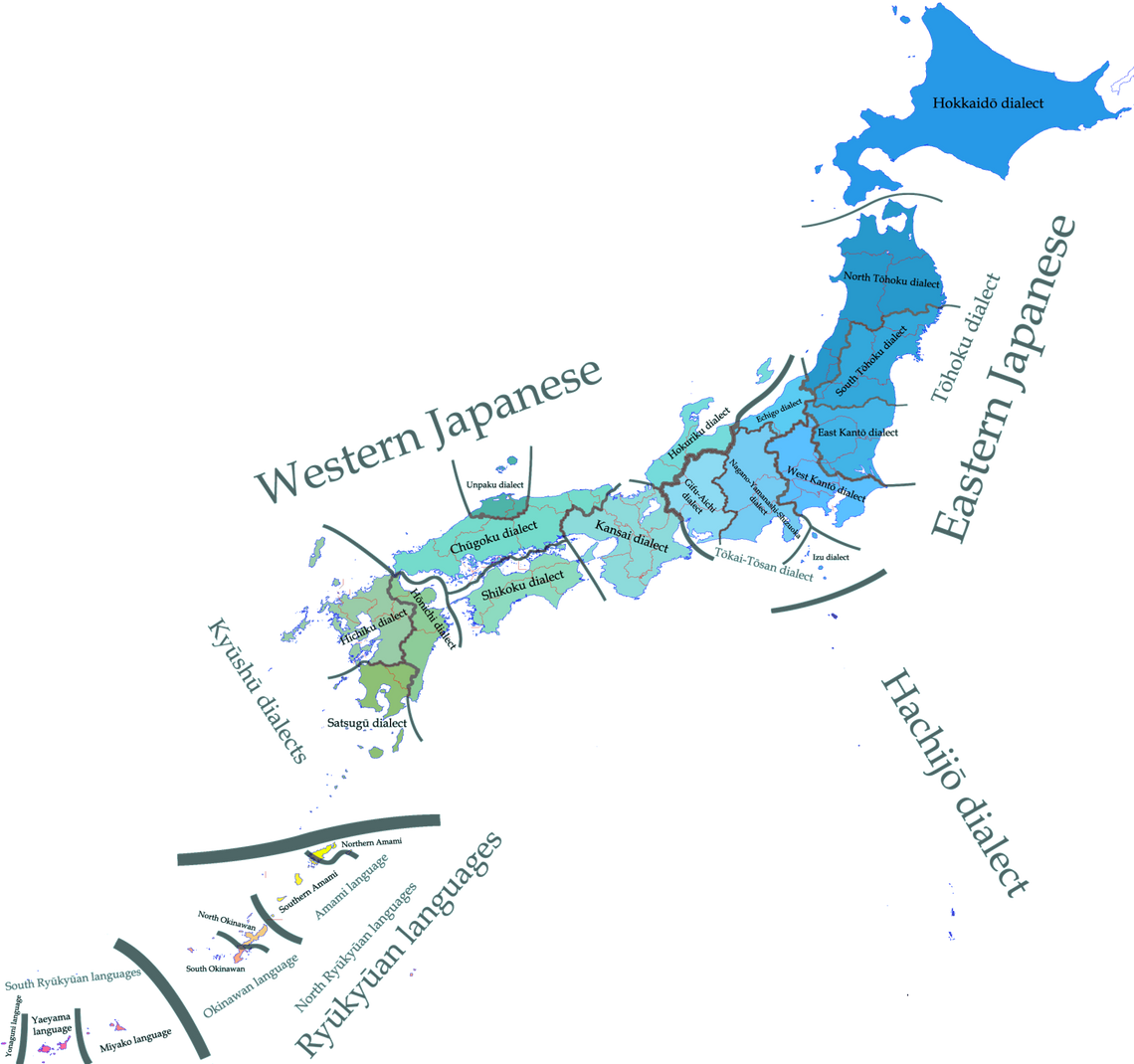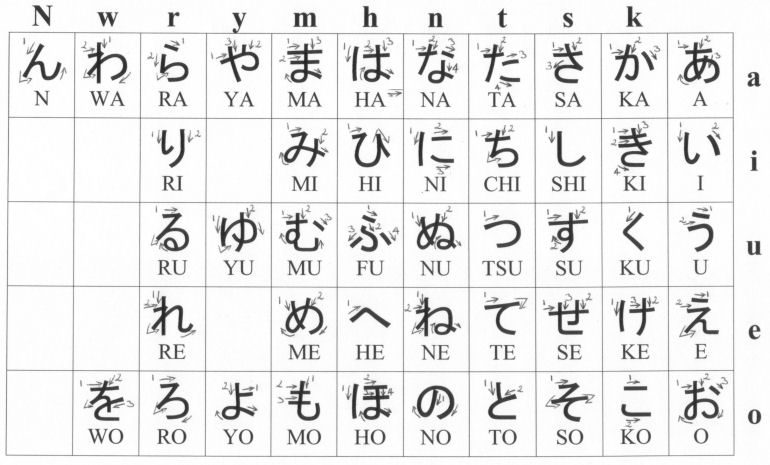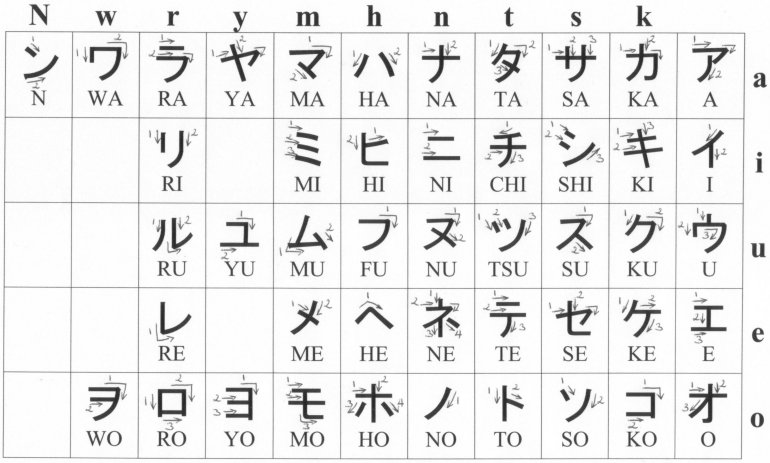
Apply to a foreign university with confidence
- Properly fulfilled documents
- Perfect motivation letter
- Support from a personal mentor
- Offers from several universities
Have you just started learning Japanese and don't know anything about it yet? Especially for you, we have collected a lot of tips that will help you "grab" Japanese and not let go.
Free consultationAbove all, this article is for those who have just started learning Japanese and do not know anything about it yet. Specifically for them, we have collected many tips to get a hold and never let go of Japanese. Let's face it: there will be difficulties, they will begin after the first few months. But this article will help you deal with them.
The article will also be useful to those who have already reached the level of Intermediate and above. Here you will find resources that will help you to build your vocabulary, learn characters and grammar, practice listening and pronunciation.

Before you start learning, remember a few simple rules:
So what should be your first steps in learning Japanese?
Hiragana is one of the three components of the Japanese writing system. The other two are katakana and kanji, we’ll tell more about them later. It's best starting with hiragana. Once you learn it, you can read and write Japanese words. In many textbooks, knowing hiragana is a prerequisite for starting classes.
The letters in hiragana denote not individual sounds, like in the English alphabet, but rather moras, rhythmic units. They differ from syllables in that they are pronounced with the same duration, and they do not always include vowels. For example, the sound [n] (ん) in Japanese is a mora, but not a syllable.
Hiragana consists of 46 characters. Learning them is not as difficult as it seems. You can do this in a week, and just learning to read can take roughly just a day. Using hiragana is quite simple: words are written as they are heard. There are exceptions, but they can be counted on the fingers of one hand.

| Resource | Description |
|---|---|
| Tofugu — Learn Hiragana | Memorizing hiragana using mnemonic techniques. The guide teaches only to read characters, but not to write. |
| Hiragana Memory Hint | Application for learning hiragana. |
Japanese is considered a phonetically poor language: it has fewer sounds than many others. Because of this, phonetics is usually called the easiest part of learning it. But although there are few sounds in Japanese, most of them are very different from the English ones: many English sounds don’t exist in Japanese and vice versa, there are only 5 vowels in comparison to the English 15, and so on. Therefore, it is important at the very beginning to devote time to the basics of pronunciation. At least to read hiragana in Japanese, not some other language.
Do not go too deep: in the initial stages, you should not be interested in Japanese pitch accent. Just know that it exists. But the pronunciation of the Japanese [r] sound (which is closer to [l] in [l]ip than to English [r]), the peculiarities of reading ふ つ ち し and long vowels are the things you must know.
You can read about this in more detail here.
Some modern tutorials do away with traditional writing altogether and go straight to typing characters on a computer. This is due to the fact that situations when we have to write by hand happen less and less often. Typing in Japanese is very easy: you can master it in less than an hour. You just need to install the Japanese keyboard layout on your computer, and then you can enter Japanese characters using their Latin readings. If you have any difficulties, refer to the video below.
But learning to write hiragana is still worth it — without it, you will have a hard time with kaiji. And if you go to Japan, especially to study, you cannot avoid it: to this day, the main tools of the Japanese bureaucracy are paper and pen.
You will begin encountering kanji characters from the very beginning of studying, so getting around them is impossible. First of all, you need to figure out what they are. In short, a hieroglyph is a symbol. It differs from the letters of the alphabet in that it has not only reading but also meaning. A hieroglyph can be a word in itself, or it can be part of a word made up from several hieroglyphs. At the same time, each kanji has two readings — Japanese reading, or kunyomi, and Chinese — onyomi. Details about the difference in readings are given here, and about the structure of hieroglyphs — here.
Once you understand the basics, you can start learning kanji. It is necessary to memorize not only the spelling and meanings of hieroglyphs, but also their readings, and the words in which they are included. This way the kanji will stay in your head for a long time.
You determine the scope of work yourself. A good learning pace is 20-30 characters and 100 words per week, but 10 kanji is also fine. How exactly you memorize hieroglyphs — by writing in a notebook or by saving in an application — is not so important. The main thing is just to do it. Though we can say from personal experience that handwritten hieroglyphs are remembered better.
Kanji is often learned later, several months after the start of studies. Learning hieroglyphs early, however, has one big advantage: once you plunge headlong into grammar, you will already have a good vocabulary to compose sentences and practice. You will immediately be able to read what is written in the textbook, therefore you won’t be distracted by unfamiliar words.
Still, you should not try to memorize all the hieroglyphs that you come across, memorize only the major ones. Words consisting of complex kanji, or conversely, lacking kanji, can be written and taught in hiragana.
| Resource | Description |
|---|---|
| Wanikani | An application for memorizing kanji and words, built on mnemonics and spaced repetition. Its downside — the application is paid: it costs 9 USD per month or 89 USD per year. |
| Quizlet | One of the most popular apps, great for learning hieroglyphs and new words. Quizlet allows you to create flashcards yourself or use ready-made sets. |
| Memrise | An app for learning Japanese phrases and words. Based on the principle of spaced repetition, has a nice design, uses mnemonics. |
| Japanese Kanji Flashcards | A set of cards with the first 300 kanji. The set is very high quality, but also expensive — 36 USD excluding delivery. Suitable for those for whom the application is not enough and it is important to have its physical equivalent. However, you can make cards yourself, the old-fashioned way — with nothing more than paper, scissors, and some elbow grease. |
| An application designed specifically for learning kanji. In it, you can not only memorize the readings and meanings of hieroglyphs but also practice writing. However, the interface may seem overly complicated. | |
| Jisho.org | English-Japanese and Japanese-English online dictionary. You can search both for words and individual kanji. The kanji pages have detailed information with readings, meanings and usage examples. A mobile application is also available. |
| Tangorin | Another online dictionary. The functionality is the same as that of Jisho.org, plus a hieroglyph search by key is available. There is also a mobile application. |
| Tatoeba | A corpus dictionary. It contains examples of the use of words in context and their translation into different languages. |
At the same time as learning kanji, you should start learning katakana. Katakana is the second of the Japanese alphabets. It is mainly used for writing foreign and loaned words. For beginners, it is usually more difficult due to the fact that it is used less often. In it, as in hiragana, there are 46 symbols that denote the same sounds. Some of the letters are similar, but most are different beyond recognition. Don't worry, with additional resources it is not difficult to learn them.

| Resource | Description |
|---|---|
| Tofugu — Learn Katakana | Memorizing katakana using mnemonic techniques. The guide teaches only to read characters, but not to write. |
| Kana | Application for learning katakana and hiragana. |
Once you have a minimal vocabulary, you can start practicing grammar. You will probably already know something about the word order and cases by then. The tutorials will help you delve into the topic. All the material in them is built according to a well-thought-out program so that the level of difficulty will increase gradually. The disadvantage of textbooks is that most of them are designed for lessons with a teacher, so they do not explain many things.
Alternatively, there are many resources devoted to grammar, and on the website Hinative, you can ask questions to native speakers. If you are learning the language on your own, make sure to check their answers in several sources.
And yet, you will surely come across topics that you won’t be able to find answers to, no matter how hard you try. In this case, it is worth hiring a tutor. Do it as early as possible, especially if you have little experience in learning foreign languages. However, do not rely entirely on the teacher. You need to learn hieroglyphs on your own (and do it consistently). The teacher will not do it for you, and they are given too little attention in the textbooks.
| Tutorial | Pros | Cons |
|---|---|---|
| Genki |
|
|
| Minna no nihongo |
|
|
| Yookoso! |
|
|
| Resources Resource | Description |
|---|---|
| A Dictionary of Basic Japanese Grammar A | Paperback guide to Japanese grammar. Covers more topics than any other book, website, or tutorial. The explanations are clear and easy to understand, with many examples. |
| Tofugu An | A portal dedicated to the Japanese language. Lots of useful articles, including grammatical ones. |
| Kim's Guide to Learning Japanese | A textbook and a grammar reference book. |
By reading, you fix familiar words and expressions in your memory and learn new ones. But if you have just started to master the language, reading authentic Japanese texts will not be possible for you. You need adapted texts in either hiragana or kanji with furigana. Furigana is a kanji reading added next to it in hiragana. These can be found in textbooks, but children's books of fairy tales are also suitable. You can also use the website Satori Reader. It has texts for different levels, and they can be adapted to suit your needs: add furigana to all the hieroglyphs or only to some, leave spaces between words, or remove them — like in a proper Japanese text. You can find a detailed guide on using the application here.
| Resource | Description |
|---|---|
| Satori Reader | Collection of texts for different levels with many options for customization. The materials can not only be read, but also listened to: they are all supplemented with audio recordings. With their help, you can practice pronunciation by repeating the text word for word after the speaker. |
| Japanese fairy tales | Children's stories written in hiragana. |
| EhonNavi | Site with Japanese books for children. The only downside is that the site itself is also in Japanese. |
| CosCom | Short news for beginners. The text can be switched between romaji, kana and kanji. |
| Kodomo Asahi | Children's version of the famous Asahi newspaper. The vocabulary is simpler there, and the hieroglyphs are signed with furigana. |
| Matcha | Japanese travel and culture magazine. Available in a simplified version with furigana. |
| Read Real Japanese | Books for intermediate to advanced level. |
Assignments are included in all good textbooks. You can do them both with a tutor or on your own: there is usually a script of each recording at the end of the book. True, the dialogues in the textbooks are always very similar — this is either a trip to the bank, a conversation with a teacher, or a "Sorry, I lost my wallet, can you tell me where the nearest police station is?" sort of deal. It gets boring quickly, so additional resources will come in handy.
For beginners, FluentU is great. The materials there are divided into levels, but they contain real unadapted Japanese. Therefore, classes there are a challenge, but a doable one.
You can also use children's cartoons to practice listening. For example, Ganbare! Oden-kun (がんばれ!おでんくん) or Nihon Mukashibanashi (日本昔話). The wording in them is not very difficult, so you can study up to the Intermediate level. Particularly useful words can be written out and memorized. On your first watch, it's best to turn off subtitles and try to understand as much as possible yourself. And then, after viewing it a few times, turn the subtitles on and check how well you understand the words.
| Resource | Description |
|---|---|
| FluentU | Site for language learning through video and audio. The materials are divided into levels, with subtitles in English and Japanese. It is convenient for seeing the meanings of unfamiliar words and adding them to the study lists. The resource is paid, but there is a trial period. |
| JapanesePod101.com | Short audio and video lessons in Japanese for any level. |
| News in Slow Japanese | Japanese news read slowly and clearly. |
| The Japanese Page A | A resource designed specifically for beginners. Contains Japanese dialogue recordings and English explanations. |
| Learn Japanese Pod | Podcasts in English for beginners in the form of audio lessons, where teachers analyze simple Japanese conversations. The vocabulary is not complex, and the speech is slow. |
| Erin's Challenge | Instructional videos about exchange student Erin's adventures in Japan. Basic vocabulary, everyday situations, and funny dialogues. |
| NHK Radio Podcast | Podcasts from NHK for a high level of language proficiency. The vocabulary is complex and the speed of speech is unadjusted. |
Since we have reached the point of speaking, it’s time to say a few words about pitch accent. Contrary to popular belief, accent exists in Japanese. There it is done by raising and lowering the voice and somewhat resembles singing. Actually, that is why it is called "pitch." The meaning of a word sometimes depends on the correct stress.
Again, at the beginner level, you should not get into the depths and try to memorize the accent outline of each word, but it is still worth learning the basic rules, especially since there are only three of them. Find detailed information here. You can check the pronunciation of a word in the OJAD dictionary.
The correct use of stress will make your Japanese speech much clearer and more beautiful than most foreigners’ (especially beginners). Favorite anime and TV series will help you to improve your pronunciation. Pay attention to the way the characters speak when you watch them. Repeat them word for word, copying the intonation. This technique is called "shadowing." If you are a big fan of Japanese culture, you will not notice how you start to speak more naturally.
You can try to find a language partner on social media or apps like Tandem or Easy Language Exchange. Another way is to enroll in courses or hire a teacher.
The more you interact with the language, the faster you progress. So surround yourself with it as much as possible. If you are reading this article and have reached this far, you have probably already watched a huge number of anime. Passion will bring real benefits if you revisit your favorite titles with Japanese subtitles. Yes, it will be difficult, but that is why it is worth starting with what you have already watched — after all, you know perfectly well what is going on. And this time, you will definitely pick up something other than kawaii and senpai.
If you are not a fan of anime, then Japanese culture has many other interesting things to offer, from the classics of world cinema to insane TV shows. And watch more Japanese YouTube. Sometimes fascinating things are hidden where you least expect them — for example, in real estate reviews.
You can study the language not only on your own but also in courses and with a tutor. Each method has its own advantages.
Courses:
Tutor:
The most effective way to learn a language is in its natural environment, in language courses in Japan. But it is better to go there, already knowing at least the basics. Absolute beginners will have a hard time: Japan speaks very bad English[1]. There are two good websites for finding a tutor, even a native Japanese: Preply and italkiA
| Resource | Features |
|---|---|
| DuolingoPlay | Gamified language courses. |
| Memrise | Suitable for learning basic words and expressions. Poor for learning kanji and grammar. |
| LingQ | Language learning resource. The assignments and materials cover different aspects: kanji, reading, listening. |
| Learn Japanese From Zero | Tutorials on YouTube based on the book Learn Japanese from Zero. |
| Learn Japanese on Reddit | Community learning Japanese. Here you can learn about personal experiences, difficulties, and lifehacks. |
| Onomatopedia | Resource for learning onomatopoeic words. In Japanese, they play a very important role — without them, your speaking will not be natural. |
| YouTube channel JapanesePod101.com | A channel for learning Japanese. Lots of assignments and explanatory materials. |
Most people start learning Japanese because of their interest in the culture of the country, but not for practical reasons, unlike, for example, Chinese. Indeed, all 126 million native speakers of Japanese live in one country, so the language's applications seem limited. Is that so?
Japanese is unlikely to be useful anywhere outside the Land of the Rising Sun — unless you work as a translator. But on the other hand, Japan itself, although not very large geographically, is surprisingly rich — both culturally and naturally. The northernmost island, Hokkaido, is located very close to the Russian Sakhalin, while the southernmost ones, Okinawa and the Ryukyu archipelago, have a climate similar to Hawaii. At the same time, unlike many countries, it is pleasant to go to Japan at any time of the year. Every season there is bright, with its own advantages: in summer — lush greenery, fireflies, and cicadas; in autumn — red maples; in winter — camellia and persimmon buds under the snow; in spring — blooming plum and sakura. Each prefecture in Japan has a rich history and traditions. Local dishes, crafts, and customs exist in many parts of Japan, even very small villages. However, outside of Tokyo, Osaka, and Kyoto, English is spoken rarely, if at all. So, without knowing the language, getting a complete picture of Japan will not be possible.

Education in Japan is also respected outside the country: according to QS ranking, five Japanese universities are included in the top 100-world universities. Education is not cheap, on average it costs from 7,000 USD per year. But there is an opportunity to study for free.
Every year the Japanese government holds a competition for the MEXT scholarship. It is intended for students of all levels of study: undergraduate, graduate, and PhD. The scholarship fully covers the cost of studying at a Japanese university, plus students are paid a monthly allowance of 839 USD to 1,035 USD. This will be enough for accommodation and meals. Knowledge of Japanese is not a prerequisite for the scholarship, but it will be an advantage.

Many people dream of moving to Japan because of the high standards of living. The most realistic way to do this is through employment, and for this, you will definitely need the Japanese language, and at a fairly high level. To work in a Japanese company, you will have to learn not only the specialized vocabulary but also keigo (敬 語) — "polite language." Without it, communication with customers, or within the company itself, will not be possible.
After graduation from a Japanese university, it will be easier to stay in the country. The unemployment rate in the country is very low — 2.29%[2]. The most demanded professions are IT specialists, marketing specialists, medics, engineers, and designers[3].
After five years of living in the country, you can apply for citizenship. However, the time spent in the country on a student visa is not taken into account. There are no specific language requirements for citizenship, however, the applicant is expected to have fluency in the language. The language proficiency test is not always requested[4]. Other requirements include:
There are various tests to evaluate foreigners' knowledge of Japanese. The most important and most common of these is JLPT, or nihongo noryoku shiken (日本語能力試験). JLPT has five levels, from N1 to N5, with N1 being the highest and N5 the lowest. The levels roughly correspond to the European CEFR scale from A1 to C1 (N5 = A1, N1 = C1). The exam tests the student's ability to read and use hieroglyphs, as well as listening comprehension. At the same time, there are no parts with writing and speaking in the test, which is why it is constantly criticized.
The exam is taken twice a year — in December and July. JLPT costs much less than international exams in English — 24-36 USD.
The JLPT test provides official proof of Japanese language proficiency. It can be useful for several purposes:
| Level | Number of kanji | Number of words |
|---|---|---|
| N5 | 100 | 800 |
| N4 | 300 | 1500 |
| N3 | 650 | 3700 |
| N2 | 1000 | 6000 |
| N1 | 2000 | 10000 |
60+ countries
we work with
$1,000,000 saved
by students through scholarships
6,400 offers
our students got